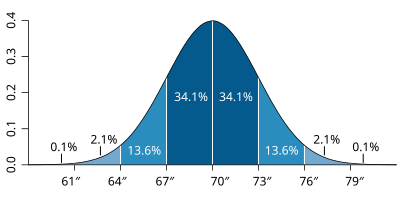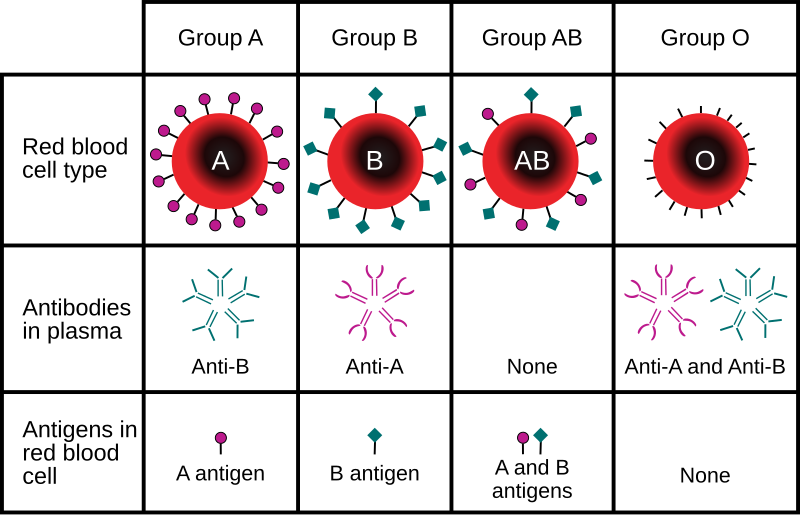OCR Specification focus:
‘Distinguish intraspecific and interspecific variation; compare continuous and discontinuous variation; consider genetic and environmental causes with examples.’
Types and Causes of Variation
Variation refers to the differences between individuals within and between species. Understanding variation is fundamental to studying biodiversity, adaptation, and evolution.
Variation explains why individuals of the same species differ in appearance and function. It arises from genetic and environmental factors, shaping evolution through natural selection.
Intraspecific and Interspecific Variation
Intraspecific Variation
Intraspecific variation occurs within a single species. For example, humans show variation in height, blood type, and skin colour.
Intraspecific Variation: Differences observed among individuals of the same species.
This variation ensures that members of a species are not identical and forms the raw material for natural selection. It enables populations to adapt to changing environments.
Interspecific Variation
Interspecific variation exists between different species. For instance, the difference between a horse and a zebra, or between oak and pine trees.
Interspecific Variation: Differences that exist between individuals of different species.
Such variation underpins biodiversity and helps scientists classify organisms and study evolutionary relationships.
Continuous and Discontinuous Variation
Continuous Variation
Continuous variation shows a range of values between two extremes, with no distinct categories. Traits influenced by many genes (polygenic) and affected by the environment tend to be continuous.
Examples include:
Human height
Body mass
Leaf length in plants
Continuous variation often forms a normal distribution curve when plotted on a graph.

A bell-shaped curve illustrating the normal distribution of human height. Such distributions are typical of polygenic, continuous variation, where many genes and environmental factors combine to produce a range of phenotypes. The axis labels make the spread and typical values explicit for students. Source.
Continuous Variation: Variation that produces a complete range of intermediate phenotypes between two extremes.
The combination of multiple genes and environmental factors results in the smooth gradation of characteristics.
Discontinuous Variation
Discontinuous variation presents distinct, separate categories with no intermediates. Each individual can only belong to one category, such as blood group (A, B, AB, O) or flower colour in pea plants.
Discontinuous Variation: Variation that produces distinct categories with no intermediates; usually controlled by a single gene.
Discontinuous traits are monogenic, meaning they are determined by a single gene or a small number of genes, and are usually unaffected by the environment.

A labelled diagram of the ABO blood group system, showing the four discrete categories and their associated antigens and plasma antibodies. This visual reinforces that discontinuous variation produces separate classes rather than a continuum. (Includes extra immunology detail beyond the OCR focus, but it remains directly supportive and uncluttered.) Source.
Between these two extremes, some traits may show both genetic control and limited environmental influence, leading to partial overlaps in data distribution.
Causes of Genetic Variation
Genetic variation arises from differences in the genetic makeup of individuals within a population. These differences are inherited and contribute to evolutionary change.
Sources of Genetic Variation
The main sources include:
Mutation
Random changes in DNA sequence that can introduce new alleles into a population.Independent Assortment
During meiosis, chromosomes are distributed randomly, creating unique combinations of maternal and paternal chromosomes.Crossing Over
Exchange of genetic material between homologous chromosomes in meiosis I leads to recombinant chromosomes.Random Fertilisation
The combination of gametes during fertilisation is random, producing a vast number of genetic combinations.
Each of these processes ensures that offspring differ genetically from their parents and from one another.
Mutation: A random change in the DNA sequence that may result in a new allele.
Genetic variation forms the basis of evolution, as natural selection acts on these differences to increase the frequency of advantageous alleles over generations.
Causes of Environmental Variation
Not all variation is genetic. The environment exerts a major influence on how an organism develops and expresses its genes (its phenotype).
Environmental Factors
Examples include:
Climate: Temperature and light intensity affect plant growth and animal metabolism.
Nutrition: Dietary differences can influence human height and weight.
Soil conditions: pH and mineral availability affect plant appearance.
Lifestyle: Exercise levels and exposure to pollutants can modify traits in animals.
Phenotype: The observable characteristics of an organism, determined by both its genotype and environment.
In some cases, environmental influences are temporary (such as tanning due to sun exposure), while in others, they can have permanent developmental effects.
Interaction Between Genetic and Environmental Factors
Variation usually results from both genetic and environmental influences. Most characteristics are multifactorial, meaning that both sets of factors interact to produce the final phenotype.
For example:
A plant’s height depends on its genes for growth potential and on environmental conditions such as soil nutrients and water availability.
Human intelligence and athletic ability also arise from the interaction between inherited potential and environmental input (e.g., education, training, nutrition).
This interplay is crucial for understanding phenotypic plasticity, the ability of an organism to modify its phenotype in response to environmental changes.
Phenotypic Plasticity: The capacity of an organism to alter its phenotype in response to environmental conditions.
The balance between genetic determination and environmental modification varies by trait. Genetic factors dominate discontinuous traits, while environmental factors have greater influence on continuous ones.
Measuring and Interpreting Variation
Scientists use quantitative techniques to measure variation and assess its causes. For continuous traits, standard deviation and variance are used to quantify how much individuals differ from the mean. For discontinuous traits, proportions or frequencies of each category are analysed.
Understanding variation is essential for studying evolution, ecology, and conservation biology, as it provides insight into how species adapt and survive in changing environments.
FAQ
Scientists use twin studies, controlled breeding experiments, and common garden experiments to separate genetic effects from environmental influences.
Identical twins share all their genes, so differences between them are usually environmental.
Common garden experiments grow genetically different individuals in identical environments to see how much variation remains.
Reciprocal transplant experiments move organisms between environments to identify environmental impacts.
If variation persists under identical conditions, it is likely genetic; if it disappears, it is environmental.
Continuous traits, such as height or body mass, depend on many genes, each contributing a small additive effect.
Each gene has two or more alleles, and the combined action of several genes produces a wide range of possible phenotypes.
Environmental influences (e.g. nutrition or temperature) then modify this genetic baseline, creating smooth gradations rather than distinct categories. This explains the bell-shaped normal distribution typical of continuous variation.
Yes, environmental conditions can limit or amplify genetic potential.
For example:
A plant with genes for tall growth will remain short in poor soil or low light.
A human with genes for athletic ability might not reach potential without proper nutrition and training.
Such effects occur because the expression of genes depends on environmental signals, resource availability, and physiological limits, showing that phenotype is rarely determined by genes alone.
Genetic variation provides the raw material for natural selection. Without it, populations cannot adapt to changing environments.
Advantageous alleles may increase survival or reproductive success.
Deleterious alleles may be removed by selection over generations.
Neutral alleles may persist through genetic drift.
Maintaining variation ensures evolutionary resilience, allowing species to respond to disease, competition, or climate change.
In the short term, most mutations have little or no effect on phenotype or may be harmful and removed by selection.
In the long term, rare beneficial mutations accumulate and create new alleles or traits that can become widespread if advantageous.
Over many generations, this process fuels speciation and evolutionary change, making mutation a key driver of biological diversity even though its effects are gradual.
Practice Questions
Question 1 (2 marks)
Define intraspecific variation and interspecific variation, giving one example of each.
Mark scheme:
1 mark for correct definition of intraspecific variation: differences between individuals of the same species.
1 mark for correct definition of interspecific variation: differences between individuals of different species.
Examples are not required for marks but can be credited for clarity (e.g. human eye colour; differences between lions and tigers).
Question 2 (5 marks)
Describe the genetic and environmental causes of variation in organisms. Explain how both types of factors can interact to influence phenotypes.
Mark scheme:
1 mark for stating that genetic variation arises from differences in DNA or alleles.
1 mark for describing mutation as a random change in DNA that can introduce new alleles.
1 mark for explaining genetic recombination (crossing over or independent assortment during meiosis) as a source of variation.
1 mark for describing environmental influences such as diet, climate, or light affecting the expression of characteristics.
1 mark for explaining interaction between genetic and environmental factors, e.g. genes determine potential height but nutrition influences actual height.

